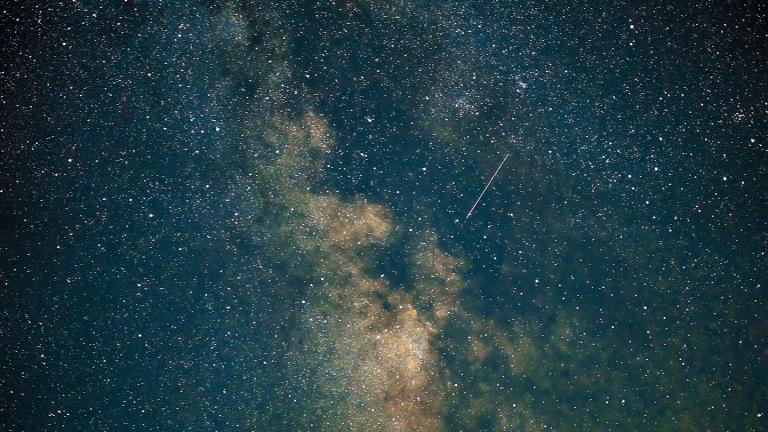Witness the magic of the night sky in the Adirondacks. With vast wilderness, minimal light pollution, and high-elevation peaks, the region offers crystal-clear views of dazzling meteor showers all year long. From the Perseids in August to the Geminids in December, stargazers can watch hundreds of meteors streak across some of the darkest skies in the Northeast.
Whether you’re an avid astronomer or a first-time skywatcher, the Adirondacks promise an unforgettable stargazing experience.
Upcoming Meteor Showers
Lyrids
Visible each spring from mid- to late April, the Lyrids are considered a medium-strength shower. While they don’t typically produce long, glowing trails, this shower is known for the occasional brilliant fireball lighting up the sky.
Alpha Capricornids
Active in midsummer, the Alpha Capricornids stretch from early July to mid-August. Though the shower is not especially strong, it is well known for producing slow, bright fireballs that stand out against the night sky.
Perseids
The Perseids are the most popular meteor shower of the year, lighting up Adirondack skies from mid-July through late August. At their peak in mid-August, stargazers can often see dozens of shooting stars per hour under dark conditions. For the best views, look toward the constellation Perseus in the hours before dawn.
Orionids
From early October through early November, the Orionids offer a display that can vary in strength but often delivers a rewarding show. This medium-intensity shower is best viewed on crisp autumn nights, with activity peaking in late October.
Leonids
The Leonids, active in November, are famous for producing rare but spectacular meteor storms. While most years the display is modest, the chance to glimpse even a handful of meteors streaking across the sky makes it worth a look around mid-November.
Geminids
The Geminids are among the brightest and most reliable meteor showers of the year. Visible in December, they are known for their colorful streaks and strong activity that can often be seen before midnight. Bundle up, face the constellation Gemini, and enjoy one of the season’s highlights.
Ursids
Just after the Geminids, the Ursids appear around the winter solstice. Though smaller and less known, this shower can produce a few meteors during the longest nights of the year, especially in the early morning hours.
Quadrantids
Kicking off the new year, the Quadrantids blaze briefly across the skies in early January. This shower can be quite active, but its short peak window and frequent winter weather make sightings a special reward for determined stargazers.


